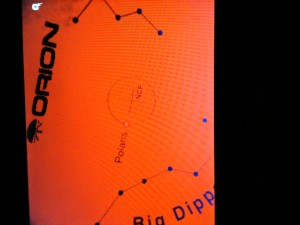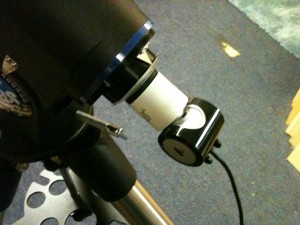
For the 2011 season, as I trek into the uncharted territory of capturing images at a focal length of 1625mm at f/8, it can only help to ensure that tracking is as good as it can possibly be. It is easy to find research material about what works for others (qualified and unqualified), how good tracking must be for given image resolutions and other theoretical goals for producing excellent images. That research highlights the important considerations for adequate tracking. At some point, though, the experimenter/engineer in a person takes over and insists that he/she tests and confirms what works… with the proof, ultimately, in the pudding. My quest for better tracking will initially focus on polar alignment.
Last season and before, my thought was to use the polar alignment scope, get Polaris in the little circle, and polar alignment would be good enough. And perhaps at focal lengths of 714mm and under, it was acceptable. But this season, my goals are to both achieve better initial polar alignment, and also assess the quality of alignment once the mount is all loaded up and ready to go.
This entry introduces one tool that may help to improve polar alignment, a neat little trick that was first shared (as far as I know) at astronomy shed. This mod is simple and perhaps not really necessary, but it is really cool. And it can certainly make things easier… which can lead to more accurate results. In summary, the idea is to attach a web cam to the mount’s polar alignment scope, allowing the polar alignment to be completed in a comfortable, upright, human position, rather than crawling through the wet grass, looking through the polar scope at an awkward angle, and in the case of our club’s Greene County site, kneeling in cow patties!

Here are additional pictures of my version of the mod, however the whole process is much better demonstrated in a video by Dion from Astronomy Shed. To date, I have tested this in the front yard to get things focused, and to ensure Polaris will ultimately be bright enough to identified behind the light of the polar scope (and under a glaring street light). So far, so good. Looking forward to an actual night out soon.
Next time, more about Polar alignment.
